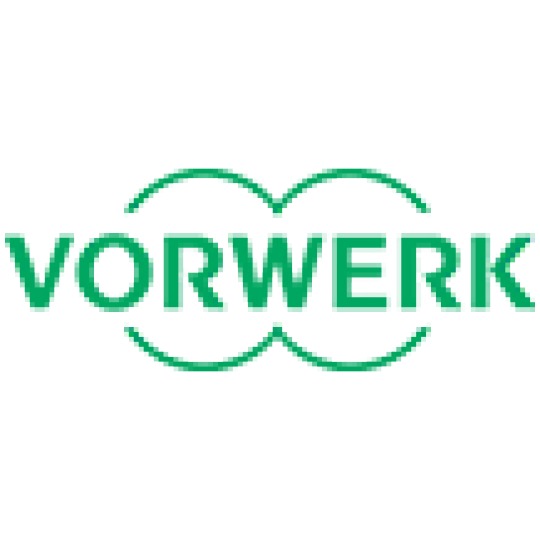
This is how Vorwerk Temial becomes firmly fixed in customers' minds!
Part of digital branding is listening to users
Developing a new product is always exciting; popularizing a new brand is always a challenge. It takes a well thought-out branding strategy to secure a firm place in the minds of the target group. Nearly 12 months after the presentation of Vorwerk’s Temial tea maker, I asked Armin Meraner, Head of E-Commerce and Online Marketing International, to look back on the past year. A conversation about the challenge of conveying emotions online and the question: how can analog and digital customer experiences be joined seamlessly?
Armin, it has been nearly a year since the presentation of the Temial tea maker. What is your conclusion thus far?
On the whole, we are very pleased, even if we have already experienced many ups and downs in this short time. Thanks to the big media response at the start, we were able to gain valuable knowledge quickly, especially in marketing. Moreover, we have seen that our omnichannel strategy for the Temial brand and a seamless customer experience works better in many areas than we imagined it would.
What role does e-commerce play in this strategy – particularly at a company like Vorwerk that is known for its strong direct sales?
Because the topic of e-commerce falls within in my personal sphere of responsibility, of course it is clear that this is my most important channel. It also plays a major role at Temial overall, but not one any bigger than those of the other marketing channels. In our omnichannel marketing, we continue to give equal priority to retail, B2B customers, and the aforementioned direct sales. Nevertheless, one thing is clear: Today, a new brand without a webshop is no longer up to date in the market, and of course we would be foolish to ignore that. Why should we tell customers what channel they have to use to buy Temial? They should shop where they want.

Customers can also order at a so-called TeaTime, a sales concept with which many are already familiar from the Thermomix. What is the advantage of having Temial presented to you at home?
Especially with a new product, it is important for customers to have the chance to experience it live and in person. TeaTime is an opportunity for our advisors to invite participants to the tea world personally, present the product line live, and directly share their tips and tricks for using the device. However, it is not primarily a matter of explaining the technical functions in detail. Instead, the big advantage is that we can introduce customers in an emotional manner to the whole subject of tea, in other words, the multiplicity of tea varieties and the many tastes.
So how do you open up this emotional world in the digital realm?
Admittedly, conveying emotions is more difficult online than through an advisor trained in the subject of tea in a circle of friends. We weren’t even going to try to imitate this direct contact online. For example, we first of all rejected the idea of a chatbot which we could have fed with all the information.
Instead, we want to approach people with emotional formats. That starts with our website, the imagery of which is characterized by visuals focusing on the pleasure and the tea tradition, and ends with our communication in the social channels, which is characterized by many content formats such as Teatalk with our tea expert Thomas Langnickel-Stiegler. In all of these measures, whether analog or digital, we always try to think from the customer’s point of view. For a smart omnichannel strategy is driven by customer centricity.
Armin Meraner has been Head of E-Commerce and Online Marketing International at Vorwerk Temial since mid 2016 and established the new Vorwerk brand’s e-commerce and online marketing areas from the very beginning. As the person responsible for all online marketing channels, he likes to call his sphere of responsibility the “digital face we reveal to customers”.
How do you define customer centricity in marketing?
For me, customer centricity means that we always offer customers the information relevant to them at the right time and the preferred touchpoint as well as offering them the simplest and best user experience – without neglecting our own brand promise or the specified corporate design in the process. Moreover, it is central that the user experience can be developed only interactively with the customer, whether through market research, user tests, A/B tests of advertising or concrete experiences and observations at the touchpoint. That also means questioning established habits from the user's point of view – for example, when it comes to the user navigation on our website or the omnichannel customer journey.

Can you name a specific example of this?
We consider very specifically which distribution channel is the right one for the respective customer. In online marketing, this means that we test different formats for their appeal to customers as well as their frequency. If we see that a customer is interested, i.e., reacts to our approaches, but still doesn’t buy direct online, we don’t keep approaching the customer over and over again. Instead, we use the strength of our omnichannel strategy and refer the customer to a TeaTime or the retail channel for an expanded product experience.
Moreover, we also considered how we can link our website and our online shop more tightly to TeaTime and connect the analog and digital worlds seamlessly with one other. This resulted in the idea of having the TeaTime run entirely on the smartphone via our responsive online shop – which is actually a prime example of omnichannel marketing.
What does this connection between analog and digital look like exactly?
At the beginning of the TeaTime, the guests can register on the website using an individual code. With five questions, they are then asked about their tea preferences. On the one hand, this is an interactive and playful introduction to the topic, and on the other it provides us with valuable insights from a marketing point of view. In addition, the customer is "married" to the respective Temial advisor in our system. If he or she orders subsequently – whether right at the end of the TeaTime or only weeks later – this also benefits the assigned advisor. This lets us resolve the supposed competition between the channels and we do not have the problem that an advisor would not want purchases to be made online. Advisors even profit from the other integrated channels, which make customer care easier for them.
Our approach is to develop such processes together with the customer. Anyway, digital measures are a matter of trying out a lot of things. We often work on up to ten different ideas in order to then test which one works best of all.
And how do these ideas originate?
Here, as well, we listen to customers very carefully and create ideas on the basis of specific feedback that we gather in a regular exchange with all areas. However, right at the start of Temial, we also spontaneously developed a campaign idea that focused on rash judgments of important innovations.

The ads with quotes such as “The automobile is a passing phenomenon” or “There's no chance that the iPhone is going to get any significant market share” were a reaction to some critical articles about Temial and were played precisely to those people who had dealt with them – true to the motto: “Good things take time.” By the way, that’s also a good motto for successful omnichannel marketing over the long term.